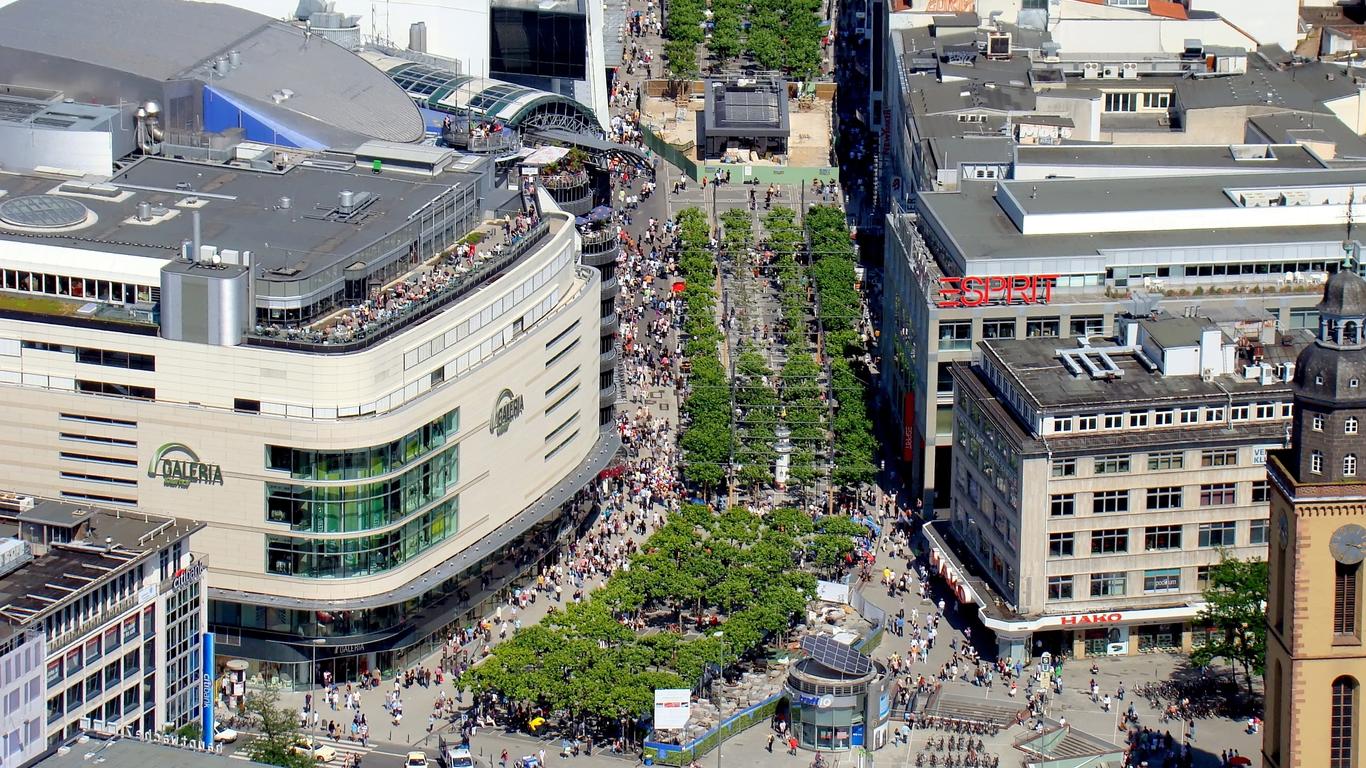The inner city, called the Innenstadt in German, is the core district and centre of Frankfurt am Main, a major city in the west of Germany known for its historic landmarks, quintessential German culture and significant businesses. The Innenstadt makes up part of this central business district that acts as the heart of Frankfurt, full of skyscrapers and offices, although shopping streets, residential areas, parkland and the riverside of the Main are also part of the inner city. Indeed, the whole inner city is divided into numerous smaller sections including the Opera Quarter, Courts Quarter, Bankenviertel and old town of Frankfurt.
The Bankenviertel is a significant part of Frankfurt as the central business district of a city known for its economy and business, containing impressive modern architecture with the most noticeable being the 30-metre tall Commerzbank Tower. Neighbouring this district is the Altstadt, the historic old town of the city, which contains such landmarks as Goethe House, the old home and current museum of the famous writer, and the Romerberg, the 600-year-old town hall and heart of Frankfurt. Another important section in the Innenstadt is Zeil, the pedestrianised shopping district, where visitors can find a range of fashion labels in addition to restaurants, bars and cafes in which to relax. Other inner city landmarks are the Imperial Cathedral, Old Opera House and Justice Fountain, or visitors can discover local culture at the Jewish Museum or Historical Museum, and there are also streets celebrated for their bars, clubs and general nightlife scenes.
International visitors can reach the Innenstadt of Frankfurt by firstly flying into nearby Frankfurt Airport and then taking the bus or S-Bahn into the centre. Visitors can also travel directly into the inner city by train to the central station, which is also where long distance buses arrive. Within the Innenstadt, it is possible to navigate by foot, although there many U-Bahn stations across the city.
The present day Innenstadt was not part of the city until the 14th Century when the fortified town was extended, and many of the historic buildings of the Altstadt were constructed. During the 1700s, grand bourgeois architecture infiltrated the city, and it soon developed into an urban hub around the inner city centre.





